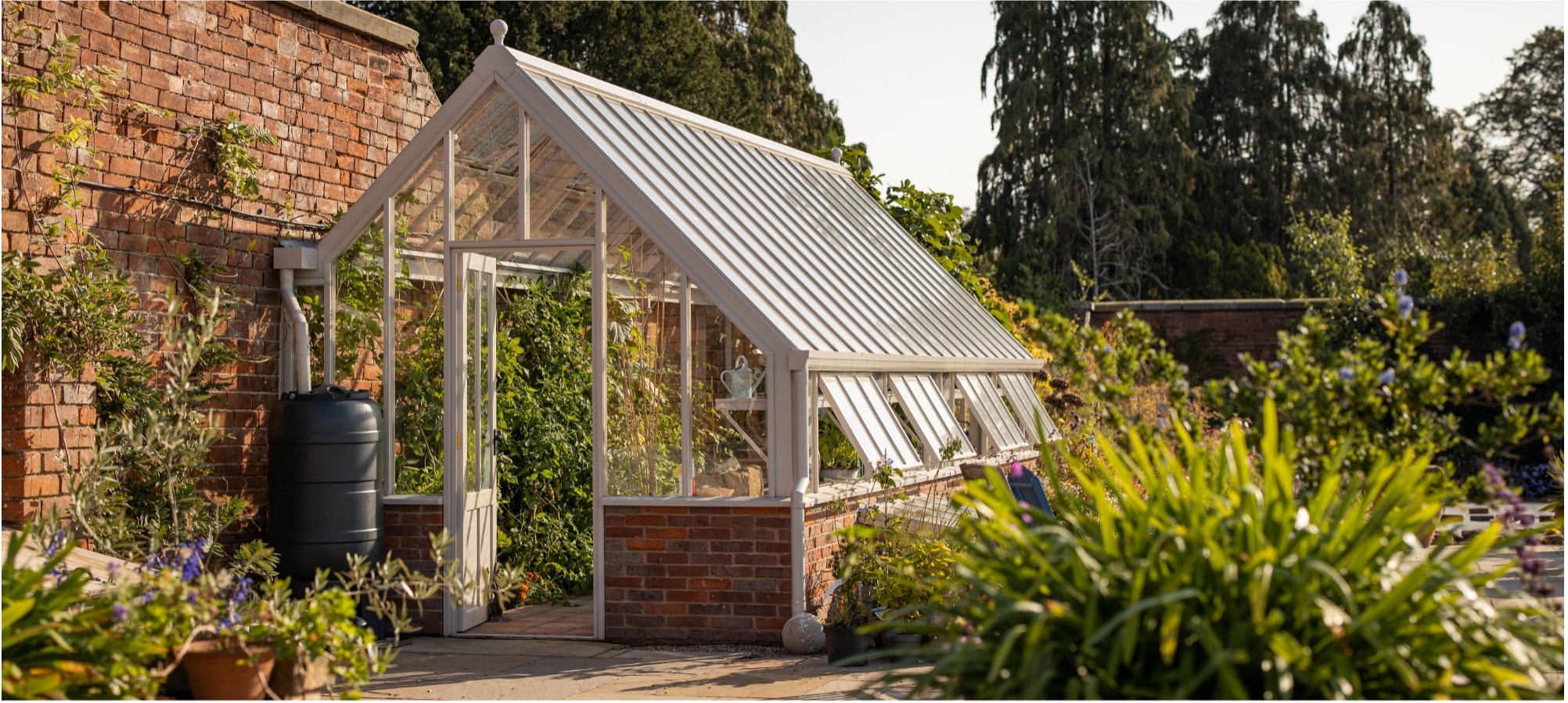
At Hartley Botanic, we believe that growing edibles from heritage seeds is one of the biggest trends amongst Greenhouse owners this year.
Interest in heritage, edible varieties, some of which can be traced back to as early as the 1600’s, has been largely driven by the rediscovery of their unbeatable flavours. Often tender crops, requiring specific growing conditions, a Greenhouse offers the perfect environment to propagate and grow these heirloom plants which, along with their taste, are valued for their historical and cultural significance and deserve to be conserved.
Hartley Botanic’s gardening writer Matthew Biggs, looks back at the history of heritage varieties, their modern resurgence and suggests some of the best to try growing.
A short history of heritage seeds
Over the centuries, hundreds of local seed varieties, mainly fruit and vegetables, were passed down as an ‘heirloom’ through generations of families, or shared among local communities in villages or regions. The best were selected for characteristics like flavour, productivity, and disease resistance, at the same time as breeding a range of seeds that would work for different soils and climates – such as apples for areas of high rainfall (where others would suffer from canker,) and cold resistant short season edible varieties.
There are countless reasons for the loss of heritage varieties including government legislation, the influence of large seed companies, old varieties falling from favour and the commercial need for vegetables to be transported over long distances and cold stored.
Maintaining the remnant
Fortunately, a remnant remain. If Heritage varieties were allowed to disappear, we not only lose the associated stories and local history, the fabulous range of textures and flavours, the suitability for a wide range of growing conditions, but most importantly of all, we lose the genetic diversity for breeding crops in the future. This is at a time when we are focussing on planet-friendly gardening and the massive challenges of climate change.
Small nurseries and charities like Seed Savers Exchange in the USA (www.seedsavers.org), the Alliance of Native Seed Keepers (www.allianceofnativeseedkeepers.com) and Garden Organic’s Heritage Seed Library (www.gardenorganic.org.uk) in the UK are at the forefront of seed saving and maintaining biodiversity, although some crops filling our catalogues like potatoes still rely on established varieties.
Heritage seeds, like the sweetly flavoured broad bean ‘Bunyard’s Exhibition’ (introduced in 1884) or Leek ‘Musselburgh’ which can be started off in a cold Greenhouse, have found their way into the seed catalogues of larger seed companies. Some have also become the focus of small-scale specialists. Others are exchanged at hugely popular ‘seed swaps,’ or have been saved by becoming trendy or novelty crops like container grown pea ‘Tom Thumb’ and the Asparagus pea – a 16th century vegetable, with winged pods and crimson flowered broad beans which was popular in the 1700’s which almost became extinct. Heritage varieties like ‘Nero de Toscana’ or Black Tuscan Kale,beetroot ‘Albina Vereduna’, Aubergine ‘Listade de Gandia’ from Spain which can be started early in modules in the Greenhouse, have also found their way onto seed lists in places other than their country of origin.
What heritage or ‘heirloom’ varieties may lack in uniformity, productivity, or consistency of F1 hybrid cropping, they more than compensate in heritage, back story and in the majority of cases, flavour; our heritage is also our future.
The 3 best heritage varieties to try in your Greenhouse
- Cucumber ‘Telegraph Improved’ – mild flavoured, grows very long and straight. Needs humidity, warmth and constant moisture. Plant in borders for easy of watering, and mist regularly with tepid water.
- Chilli Pepper ‘Anaheim’ – a variety from the early 1900’s with low to moderate heat which makes it good in salsa or sauces. Needs a long growing season and temperatures between 15 -30 C to fruit well. Damp down the Greenhouse floor with water twice a day to maintain humidity. Feed weekly with high potash tomato fertiliser when the first flowers appear.
- Tomato ‘Brandywine Pink’ – a large, delicious beefsteak, tasty in sandwiches, salads or on the barbeque. Train the main stems up canes, remove the sideshoots that appear between the stem and leaf base, using your finger and thumb, water regularly with tepid water to keep the compost moist and feed with high potash liquid tomato fertiliser once the first fruits start to swell.
Other heritage varieties popular with Greenhouse owners
Tomato ‘Black Russian’ (Solanum lycopersicum): This heirloom tomato variety is known for its dark colour and rich, complex flavour. It’s a popular choice among gardeners for its unique appearance and delicious taste.
Runner Bean ‘Scarlet Emperor’ (Phaseolus coccineus): This pre-1633 heritage runner bean variety is prized for its vibrant red flowers and excellent flavour.
Beetroot ‘Bulls Blood’ (Beta vulgaris): From around 1840, is both edible and ornamental and valued for its deep burgundy leaves and tender roots. It’s a versatile variety that can be used for both its leaves and roots.
Kale ‘Black Tuscany’ (Brassica oleracea): Also known as ‘Cavalo Nero’ or ‘Nero de Toscana’ introduced into cultivation around 1885 is a heritage variety with dark, bumpy leaves and a mild, slightly peppery flavour. It’s a popular choice for salads, soups, and stir-fries.
Golden Bantam Sweetcorn (Zea mays): This heritage sweetcorn variety, introduced commercially by US seed company Burpee’s in 1902 from seed given to them by a gardener in Massachusetts, is known for its deliciously sweet, golden-yellow kernels.
All Hartley Botanic’s Glasshouses and Greenhouses are handmade, bespoke, and made to order. Customers interested in purchasing a Hartley Botanic Greenhouse should visit http://www.hartley-botanic.co.uk or call 01457 819 155 for more information.










